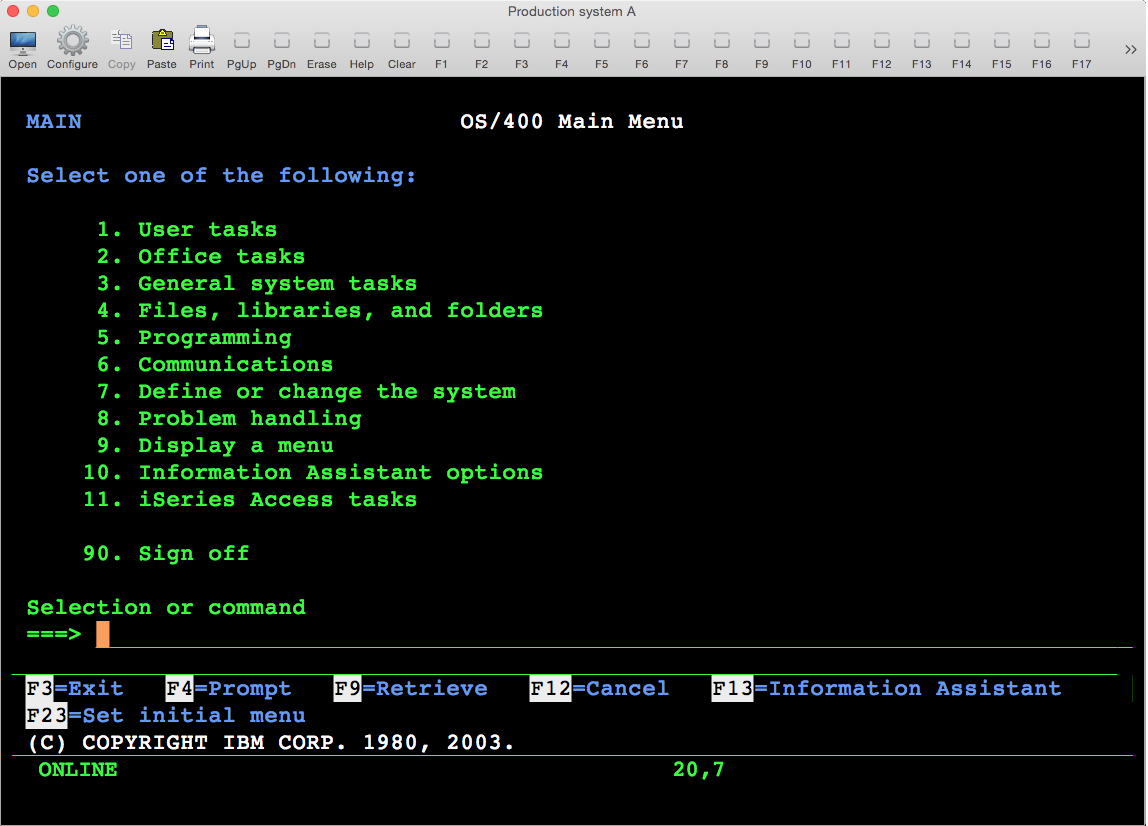Glorium 1.0.1 For MacOS
Mac OS X Server 1.0, released on March 16, 1999, is the first operating system released into the retail market by Apple Computer based on NeXT technology. It was the final release of the product code-named Rhapsody, which was an interim combination of the OpenStep system (Mach OS and OpenStep API) and Mac OS 8. Although Mac OS X Server 1.0's graphical 'look and feel' was a variation of the.
OS/2 1.x 1.3OH/2 has been originally a shared effort between IBM ánd Microsoft. It grew out of initiatives to create a. It has been intended to become the future Operating-system for IBM's i9000 new PS/2 collection. At discharge it competed against GUI layer, but many users continued to make use of.
Operating-system/2 1.x had been used as the foundation for1.back button was greatly criticized for its bad backwards compatibility, weightier system specifications, design decisions produced in purchase to help 286s instead of just 386s, bad hardware compatiblity, and absence of third party driver assistance. There was an inaccurate, but sensible, common perception that Operating-system/2 could just operate on legitimate IBM equipment.Nevertheless, it has been thought that all long term software growth would end up being for Operating-system/2, until an nearly overnight results between IBM and Microsoft shifted the spotlight to the yet to become developed.Without Microsoft'beds assist, IBM massively re-wrote OS/2 to create.

Etrecheck 3.0.2 – for troubleshooting your mac; displays important system details.. Record precisely what you discover on the screen and convert it into á screencast in following to no time. Screenium 3 enables you document at 60 frames per 2nd, offering ideal functionality for your lessons, gameplay recordings or any additional screen content material you wish to document. If you function with an ultra-high quality 4K or 5K display or a Retina Macintosh, Screenium 3 puts you on the safe side as it creates the smoothest video quality feasible for these forms of devices.But Screenium 3 provides much even more than ultra-smooth video capture. Take benefit of several convenient equipment that will assist you produce your ideal screencast.
For instance, you can embed iSight-footage ás a Picturé-in-Picture cut, include audio feedback or hide your desktop or desktop computer emblems during saving. Screenium furthermore files the mouse pointer as a individual monitor so you can imagine mouse clicks or edit thém at a later on stage without any hassle.Screenium't comfortable and powerful video editor provides you with all the tools you need to reduce your video clip, embed text messages or add effects, changes, or animations. Accentuate mouse steps, include geometric shapes or conceal screen areas that include personal information. Of program you can furthermore modify audio tracks and add filters to them.
Charlie.it wroté:Do you understand what modifications need to be produced?I perform not make use of that extension. I cannot discover any documents for that extension. A consumer's desktop on MacOS is /Customers/ Username/Desktop not really /house/mac/Desktop, Perhaps the 'shortcut command' is certainly 'ln -h'. I don't know what the extension will perform with that setting. A order to produce a emblematic hyperlink on MacOS wouId be:ln -s i9000 path/DatabaseNameOrReportFile /Desktop/ ShortcutLabel/Desktop can be the present consumer's desktop computer.
After that control, using Finder to open ShortcutLabel on the Desktop computer can be the same as using Locater to open route/DatabaseNameOrReportFile; on Mac0S the shortcut doésn't want to understand the program (soffice area). I wear't realize 'Shortcut kind', but probably that is certainly needed for Windows. One can produce symbolic links in any directory, not just the desktop computer. MacOS also provides the /Library/Bookmarks index as a location to store commonly utilized documents.In Finder one can very easily create shortcuts/links/aliases by locating the document, holding Option and Control, then pulling the file to the desktop or somewhere else.
The pull displays a black arrow on the document during this procedure to show that Choice+Command can be creating a pointer to the unique file. The tip offers all the info needed to discover the authentic document and program. The pointer on the desktop computer will have got the exact same file name as the authentic file, however one can réname it as preferred. No expansion is really required for developing cutting corners to data source records on MacOS because Locater offers that feature. Finder → Assist → Search → Alias has more info.
This image illustrates making use of Option+Command+Drag to develop a tip on the desktop to a spréadsheet in another foIder. I put on't use database forms and reviews. You should end up being able to make ideas to a group of data files by selecting them and U/C/dragging this collection to the desktop computer.